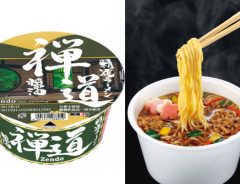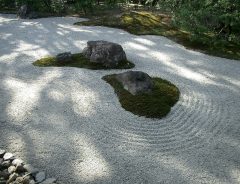- Tags:
- Japanese clothes / samue / work clothes / Zen
Related Article
-

The Kimono Will Survive: Sheila Cliffe Says It’s A ‘Complete, Fulfilling Fashion System’
-

Viral Crowdfunding Hit Yuru-Hakama Roomwear is Back for the Reiwa Era
-

AKIBA SATORI LAB offers meditative art experience at new Tokyo exhibit
-

Cup Of Zen: First Ever Shojin Ryori Cup Ramen Released In Japan
-

Koa The Cat Sinks Deeply While Sleeping
-

The Best Temples in Kyoto to Experience Zen Meditation



Timothy Nerozzi for JAPAN Forward
When searching for Japanese-style clothes, many newcomers are at a loss of where to start.
Kimono, while luxurious, can be a bit pricey. While perhaps a good investment for the Japanese clothing enthusiast, shelling out a thousand dollars is hardly something one normally does as an impulse purchase.
Cheaper alternatives to custom-made and tailored kimono exist. But for men and women like me who simply break the height charts in Japan, buying any sort of kimono off the rack is impossible. They’re simply not mass-produced to fit my 193-cm frame.
Simple robes, such as the yukata, are cheap and extremely accessible. They can be bought in retail stores and at summer events, and only require an obi belt to be put on properly. However, they’re not wearable outside of the warm months of summer, and can take some time to put on when you’re just getting started.
In comparison, by far the cheapest and most versatile Japanese garment in terms of sizing and fit is the modest samue 作務衣.
What is the Samue?
I first encountered the samue by accident while walking in the downtown area of Niigata on a Friday night. As I was passing through a crowd of people waiting on the sidewalk for their crossing light to change, I glimpsed a couple with a chic, bohemian look holding hands on the corner. The man was dressed from his ankles to his shoulders in what I thought was a monochromatic jumpsuit — until, upon further inspection, I realized it was a kind of robe.
Soon, I began to notice these robes again and again, every few days and in various different locations around the city.
I asked my Japanese friend what they were, and he told me — the samue.
The samue was invented and popularized by Japanese Zen Buddhist monks. The holy men wore these outfits when performing tasks around the monastery, or while participating in a form of spiritual mindfulness in which they clean, cook, and tend to the grounds with a deep and abiding focus on their tasks.
This kind of meditation through menial labor is called samu 作務, and is where the samue gets its name.
I put this rugged garment with humble origins to the test this year when I climbed Mt. Fuji in a samue. As outerwear, it did the job well enough — it was loose and didn’t bunch up or become uncomfortable at any point in the two-day hike. It was light and breezy, and didn’t hold too much water or weigh me down in the rain.
(...)
Written by Japan ForwardThe continuation of this article can be read on the "Japan Forward" site.
Try On the ‘Samue,’ Japanese Work Clothes for Monks — and the Rest of Us